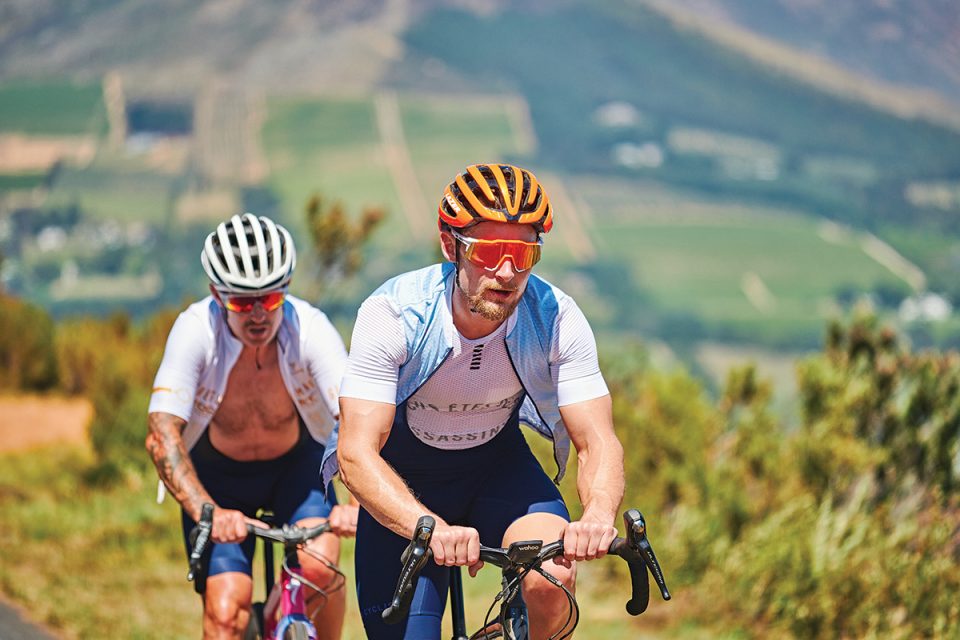Fitness trends often capture public attention with bold promises, and “hot workouts” have become one of the most talked-about in recent years. From hot yoga to heated Pilates, these workouts claim to accelerate calorie burn, increase flexibility, and detoxify the body. Recently, “hot cycling” has gained popularity overseas. It involves doing indoor cycling classes in a heated studio, usually at temperatures between 30 to 40 degrees Celsius.
For Singaporeans, the question is whether this trend makes sense in a naturally warm and humid climate. More importantly, is it safe, effective, and sustainable? While hot cycling may appeal to those who enjoy intense training environments, gyms such as True Fitness prioritise structured, safe, and motivating indoor cycling programmes that deliver results without unnecessary risks. Let’s examine if hot cycling is worth the hype.
What Is Hot Cycling?
Hot cycling is an adaptation of standard indoor cycling, performed in a heated studio. The idea is similar to hot yoga, where elevated temperatures are believed to intensify physical effort and improve flexibility. In hot cycling, participants pedal through the usual intervals of climbs, sprints, and flats, but with the added challenge of heat and humidity.
Classes are typically held at 30–40°C with controlled humidity. Some gyms also use infrared heating, which claims to create a more natural warming effect compared to traditional heaters.
Claimed Benefits of Hot Cycling
Proponents of hot cycling highlight several potential benefits:
-
Increased Calorie Burn: Higher temperatures force the body to work harder to regulate itself, potentially burning more calories.
-
Improved Flexibility: Heat warms up the muscles, which may reduce stiffness and allow greater range of motion.
-
Enhanced Mental Toughness: Training in an uncomfortable environment can build resilience and focus.
-
Detoxification: Heavy sweating is said to help eliminate toxins, though this claim is debated among medical experts.
These promises sound attractive, particularly to those chasing faster results. However, it is important to examine the scientific evidence and safety implications.
The Science Behind Heat and Exercise
Heat exposure does increase cardiovascular demand. The body has to pump more blood to the skin to regulate temperature, which raises heart rate even at lower intensities. This can make workouts feel harder and potentially increase calorie expenditure.
However, research also shows risks when combining heat with intense exercise. Dehydration occurs faster, and excessive strain on the heart can become dangerous for some individuals. While short bursts of heat exposure can be beneficial for athletic conditioning, it is not ideal for everyone, especially beginners or those with medical conditions.
Is Hot Cycling Safe for Singaporeans?
Singapore’s climate already presents unique challenges. With average daytime temperatures of 30°C and high humidity, exercising outdoors often feels like a hot workout by default. Adding artificial heat in an indoor studio may increase risks rather than benefits.
Potential safety concerns include:
-
Dehydration: Sweat loss increases drastically, raising the risk of heat exhaustion.
-
Overexertion: The body may fatigue faster, leading to poor form and potential injuries.
-
Limited Accessibility: Not suitable for older adults, beginners, or those with cardiovascular issues.
-
Reduced Enjoyment: Excessive discomfort can discourage people from maintaining a regular routine.
For most Singaporeans, traditional indoor cycling already provides intense calorie burn and stamina improvements without the need for added heat.
Comparing Standard Indoor Cycling and Hot Cycling
Indoor Cycling at Normal Room Temperature
-
Safe and accessible for all fitness levels.
-
Highly efficient for calorie burn and cardiovascular health.
-
Motivating atmosphere with music-driven sessions.
-
Adjustable resistance ensures progressive growth.
Hot Cycling
-
Adds intensity by increasing heat stress.
-
May burn slightly more calories but at higher physical risk.
-
Not sustainable for long-term participation for most people.
In terms of effectiveness, both provide cardiovascular and muscular benefits. However, indoor cycling in a standard studio remains the more balanced, safe, and sustainable choice.
The Psychological Aspect of Hot Cycling
Some people are drawn to hot workouts because they feel more challenging, and finishing a heated session creates a sense of achievement. This mental boost can motivate certain individuals to stick with their routine.
Yet for beginners or those new to structured fitness, the discomfort of extreme heat may create the opposite effect. Feeling dizzy, drained, or overly fatigued can lead to dropping out of classes. Long-term consistency is more important than temporary challenges, which is why traditional indoor cycling remains a more reliable option.
Alternatives for Those Seeking Extra Intensity
For individuals who like the idea of hot cycling but want safer alternatives, consider:
-
High-Resistance Intervals: Increase resistance during climbs to simulate tougher conditions.
-
Longer Endurance Sessions: Extend rides from 45 minutes to 60 minutes for greater stamina gains.
-
Cross-Training: Pair cycling with strength training or yoga for a complete fitness programme.
-
Music-Driven Motivation: Upbeat playlists and instructor cues can push intensity levels without the risks of heat.
These methods provide intensity and challenge without exposing the body to unnecessary heat stress.
Why True Fitness Stays Focused on Safe, Structured Cycling
True Fitness prioritises results and sustainability for its members. Their RPM™ classes are scientifically designed to provide maximum calorie burn, endurance, and strength benefits within safe conditions. Professional instructors guide participants through sprints, climbs, and recovery phases while ensuring correct posture and technique.
Instead of relying on extreme trends, True Fitness creates an engaging atmosphere with music, energy, and community support. This ensures participants achieve their fitness goals while staying safe and motivated for the long term.
Real-Life Perspectives in Singapore
Some riders in Singapore who tried hot workouts elsewhere shared mixed feedback. A few enjoyed the challenge, noting they felt a stronger sense of accomplishment. Others reported dizziness, dehydration, and reduced energy throughout the day. Many eventually returned to regular indoor cycling, finding it more sustainable and enjoyable.
This reflects the reality that while hot cycling may sound appealing as a trend, consistency and safety matter more in building lifelong fitness habits.
FAQs About Hot Cycling
Q. Does hot cycling burn more calories than standard indoor cycling?
It may burn slightly more due to higher heart rate and sweat loss, but the difference is not as significant as many assume.
Q. Is hot cycling available in Singapore gyms?
Currently, most gyms focus on traditional indoor cycling. Singapore’s natural climate already offers warm conditions, so heated classes are less common.
Q. Can beginners try hot cycling?
It is not recommended. Beginners should start with standard classes to build stamina before attempting heat-based workouts.
Q. Is sweating more during hot cycling the same as fat loss?
No. Sweating more leads to water loss, not fat loss. Fat loss still depends on calorie deficit over time.
Q. Should I choose hot cycling for faster results?
Not necessarily. Consistent participation in regular indoor cycling delivers the same benefits without the risks of overheating.

